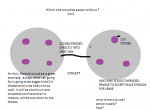- Joined
- Aug 6, 2009
- Messages
- 476
- Points
- 0
This is just something I was thinking about trying its basically like a lightsaber I am looking to achieve a thick beam maybe with phr's first to see how it goes. So I want to make an aluminum heat sink just like an aixiz module but maybe around 6x the size. Threaded, but it will have 3-4 diodes press directly into the heat sink depending on which is easier to focus 3 or 4 diodes? I already started on the lense I machined the aluminum lense housing and I'm currenty experimenting with different types of glass lenses like: binocular lenses, magnifying lenses, Also I have to figure out what drivers and power supply to use. I would like to know if this is a waste of my time anyone feel free to reply but I am looking for replys from :
Daguin
Jayrob
larryDFW
Lasersbee
Iskor12
Tech_junkie
Kenom
And if anyone feels left out thats too bad stop being a baby, lol just kidden
go right a head!
PEACE,
-SARGE
Daguin
Jayrob
larryDFW
Lasersbee
Iskor12
Tech_junkie
Kenom
And if anyone feels left out thats too bad stop being a baby, lol just kidden
go right a head!
PEACE,
-SARGE






